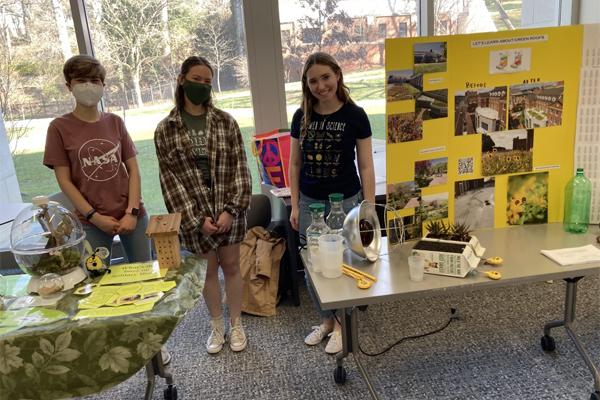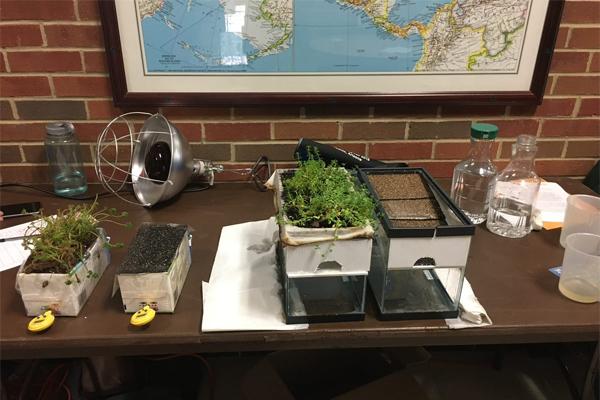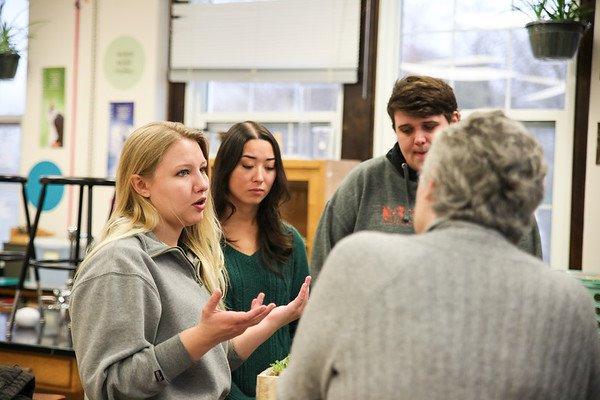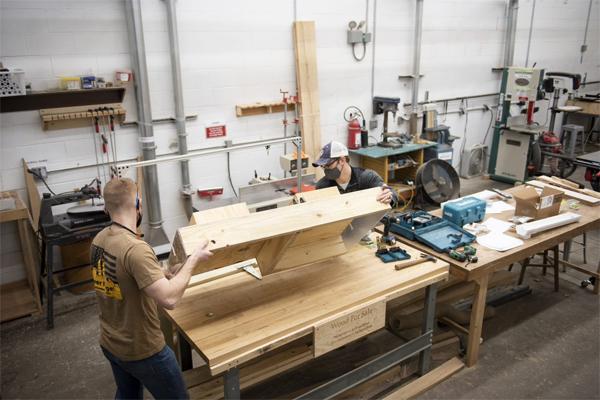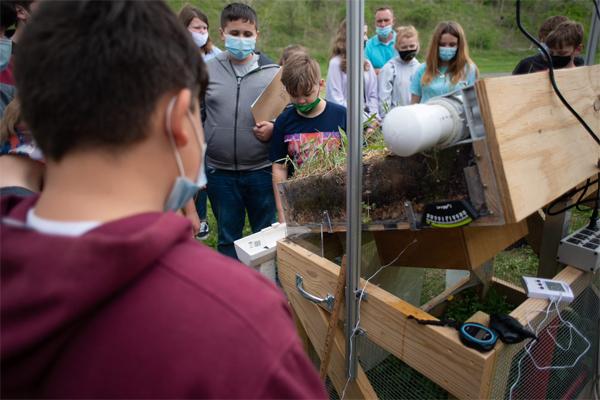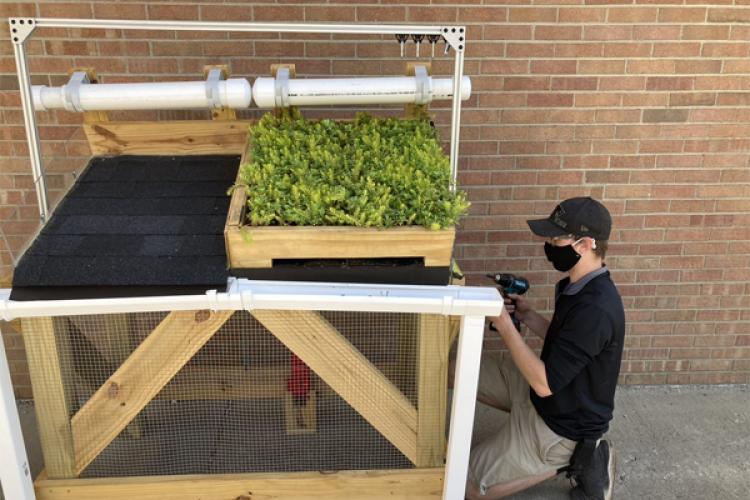

Ohio University students are taking their voices, their models and even coloring books into the local community to demonstrate the benefits of green roofs to area children and families.
Green Roof education can stimulate interdisciplinary collaborations among students and serve the community. Our rooftop models, and a video that captures their history , have helped make those green roofs more accessible to the community and area schoolchildren.
The first green roof models
This effort began when the Green Initiative Student Organization and the Renaissance Engineers came together in 2019 to develop interactive models that would help children learn about the benefits of green roofs. They created a variety of small systems that could be taken to schools and STEM events serving youths from 3 to 18. Undergraduates studying plant biology, environmental studies, civil engineering, education, communications, and other fields strengthened the effort by contributing coloring sheets, activity pages and their enthusiasm at these events and taking photographs and video at events.
Most recently, the models and other educational activities were shared on Saturday, March 19, when members of the Green Initiative and Plant Club participated in a Family Science Day sponsored by Alpha Chi Sigma, a national fraternity for chemistry students.
“I think it’s so important to allow kids to begin hearing about these issues early on and the different things that we can do to help. Even if they do not fully understand it, it’s so important that they know that our environment, plants, and ecosystems are our friends and not our enemies,” said Sam McAvoy, an environmental biology major who helped prepare materials for that event.
Sarah Maracz’s display on the importance of insects to our environment further illustrated that sentiment.
Each set of educational rooftop models features a shingled and planted surface that enables students to measure how water flows more rapidly across a permeable green roof compared to a flat roof. Children use thermometers to measure the temperature inside the models when they are exposed to heat and when the heat is turned off. They observe a more rapid increase inside the “house” with a traditional roof and a more stable temperature under the green roof.
On to bigger models
The small models had been so well received that Rachel Modzelewski, now a Russ College alumna, made the focus of her mechanical engineering senior design project the creation of large models that could be donated to schools.
Under the direction of Dr. Greg Kremer and other faculty, Modzelewski and her team (Tiffany Hill, Cole Neuhart and Pablo Beierle-Joliot) spent significant time designing and testing the prototype. They were unable to build it before the pandemic led to the closure of much of the University, but completed detailed designs so that other engineering students could finish the project.
Joel Compston and Kyle Dunlap, mechanical engineering students, built the models before graduating in 2021.
Seven regional middle and high schools and the Outdoor Museum received a donated roof kit, complete with instrumentation that would help teachers engage their students in scientific study. This was made possible with funds from the Academic Innovation Accelerator and PepsiCo Zero Impact Fund.
Sixth-grade students at Vinton County Middle School were the first group to receive and use the model under the direction of their teacher, Shem Smith. Many of the students gained experience creating graphs for the first time as they measured temperature changes on the two roofs over time. They also compared the amount of water runoff from simulated rainfall on each surface.
“I am looking forward to having the students see firsthand how a rooftop garden can affect the environment. I want the students to test some of their ideas using the model. I want the students to see how we can use models to help us understand how science works,” said Mary Ann Hopple, a middle school teacher at Athens Middle School.
Documenting the Green Roof saga
Steel Brooks, a graduate student in Scripps College, School of Visual Communication, began filming and photographing the production and delivery of the large models. Brooks has worked for the Office of Sustainability as a living hub graduate assistant since 2020.
The video depicts the variety of models that have captured the interest of children, undergraduates, and graduate students around Athens. This shared effort by Russ College of Engineering, the College of Arts and Sciences, Scripps College of Communication and the Patton College of Education will have long-lasting impacts on the children in our community as they engage in scientific thinking.
Find out more on the Green Roof project website .


